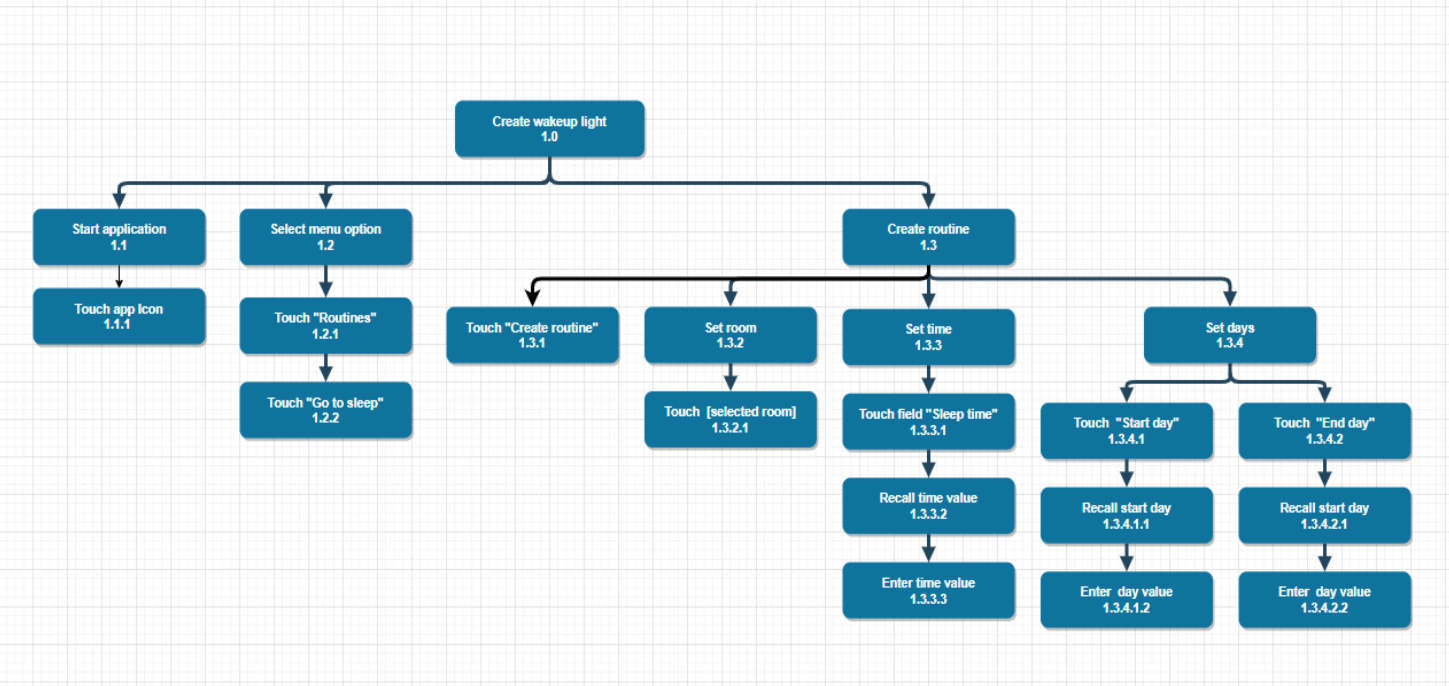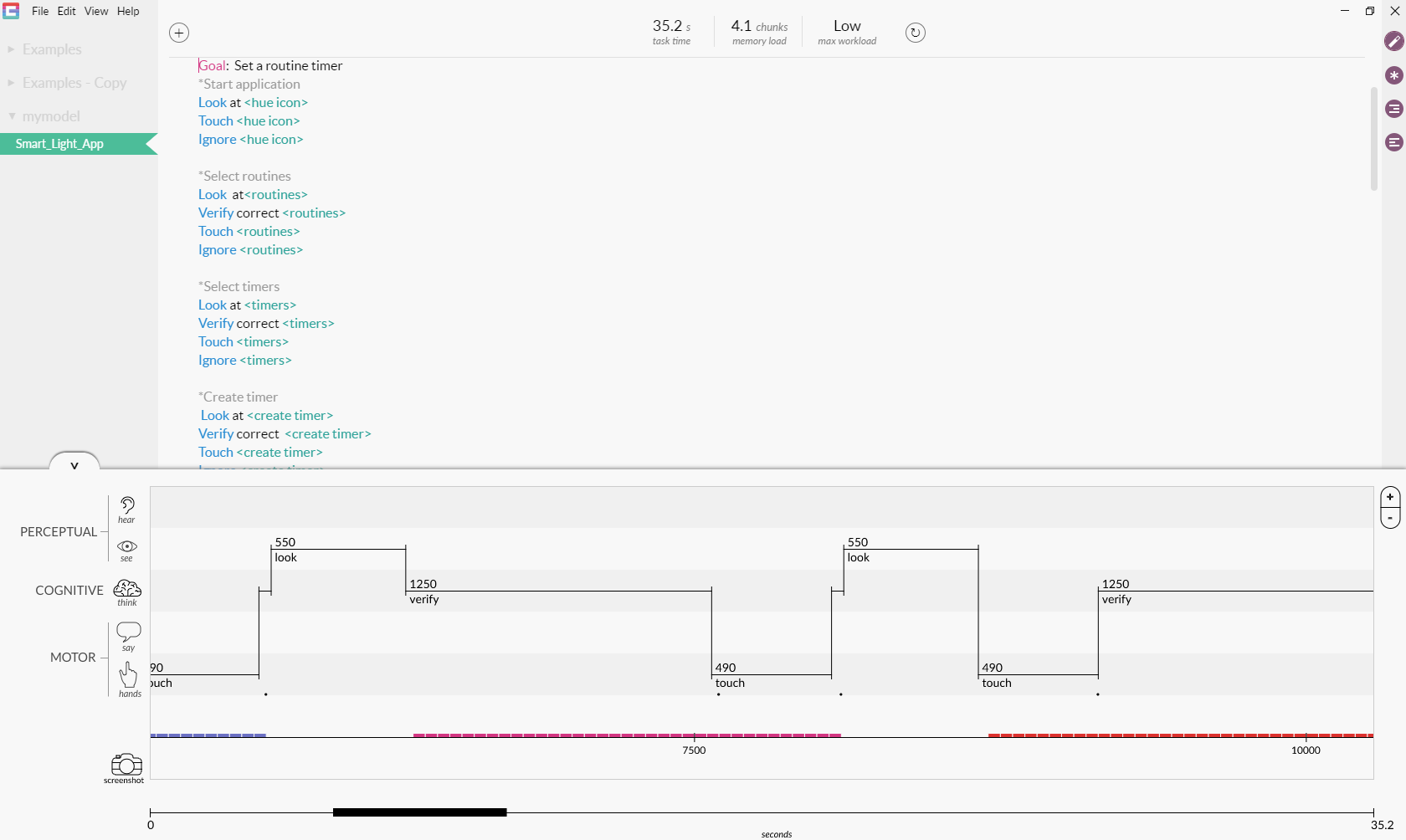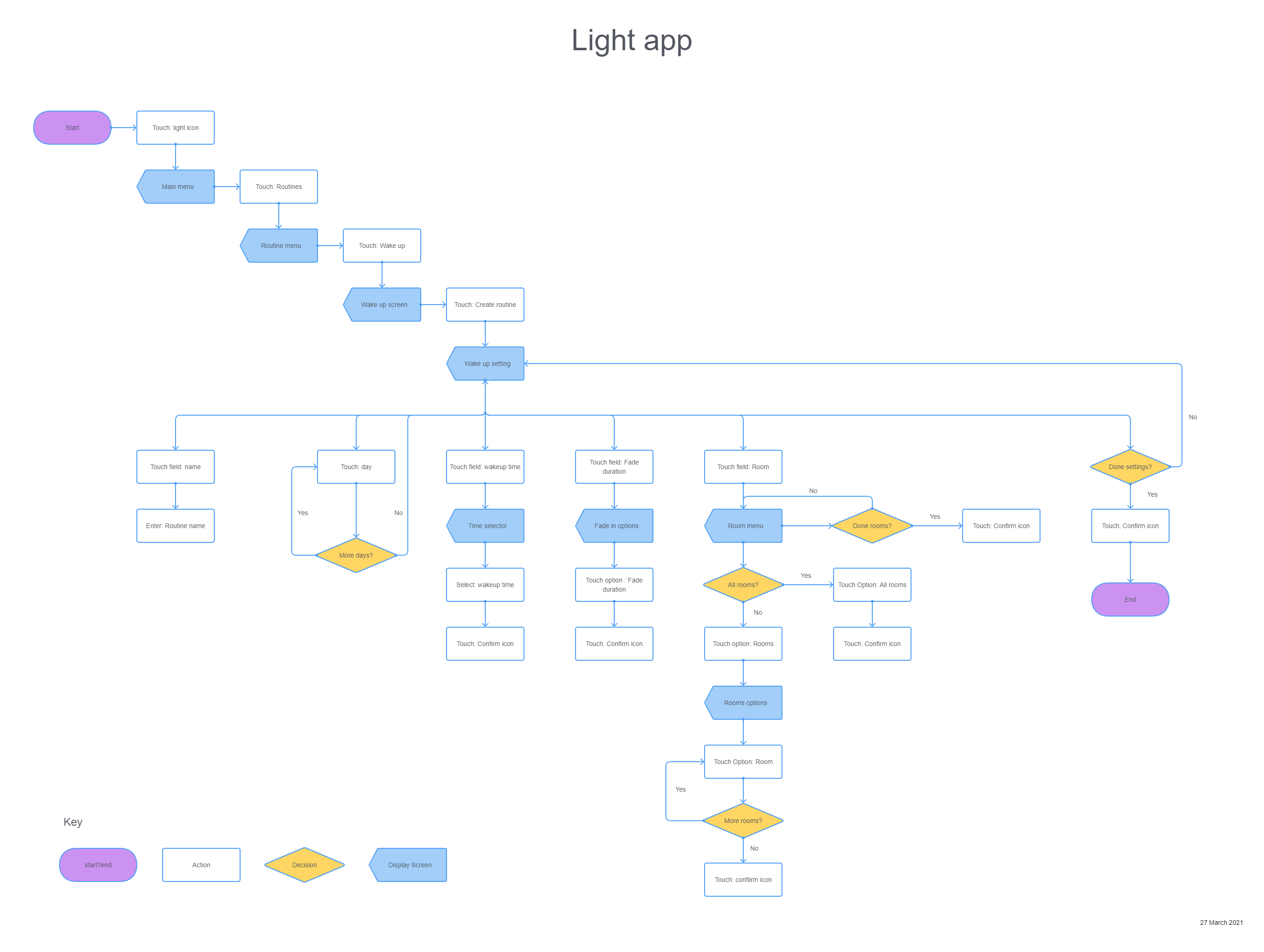Synthesise, model and visualise data about goals, attitudes, interactions and experiences to guide design choices.
Different modelling methods include user journey mapping, hierarchical task analysis, GOMS and user flows.
Click the links below or scroll down for more details.
How Can I Help?
- Advise on the most appropriate method/s given your research problem and needs
- Carry out necessary research or use provided data
- Analyse the data and map the target models/visualisations
- Produce a summary outlining actionable points relevant to your research goals
User Journey Mapping
What is it? A visual representation of a user experience that specifies the interaction scenario, persona, goals and expectations of the user with their behaviours, touchpoints and experiences of the journey mapped out on a timeline. It can be developed through contextual inquiry, users interviews and web analytics.
Why should you do it? To facilitate an empathic user perspective in product team members as well as provide a shared representation of the user experience that is both understandable and memorable. It is used to understand the complete user experience and guide product development in ways that match the needs of users.
Hierarchical Task Analysis
What is it? A method that involves specifying the hierarchy of plans, goals, subgoals and operations that underpin tasks with a particular product. This is typically visualized using a flow diagram.
Why should you do it? To make explicit the detailed structure of the task that can be used for a variety of purposes including:
- supporting a general task understanding
- reasoning about how a product could be improved
- comparing alternative ways of implementing tasks with different prototypes
- providing a basis for other types of evaluation methods such as human error analysis
You should therefore do hierarchical task analysis when you want to understand and reasoning about tasks carried on a product.

Goals, Operators, Methods and Selection Rules (GOMS)
What is it? A type of task analysis method for describing the primitive sequence of goals, procedures, action selection rules, mental operations (e.g. cognitive, perceptual, manual) and their timings. There are several types of GOMS analysis suited to different types of tasks and level of detail.
Why should you do it? To model routine interactive tasks with skilled or practised users. The GOMS analysis reveals fine-grained details about primitive operations and their timings which are used to make predictions about how long a task takes with a product.
GOMS should be used when you want to optimize the efficiency of a product for a set of routine tasks. It is also used to compare the efficiency of routine tasks on alternative prototypes.

User Flow
What is it? A flow diagram depicting a path or possible paths of a user's interactions with a product. It normally involves depicting the flow of screen wireframes, associated actions, decision points and loops. It is used in modelling persona and task-specific interactions with hand-held devices.
Why should you do it? To make the product interaction explicit and use this understanding to optimize user interactions. It's also effective in communicating designs and user journeys with clients and product team members.
